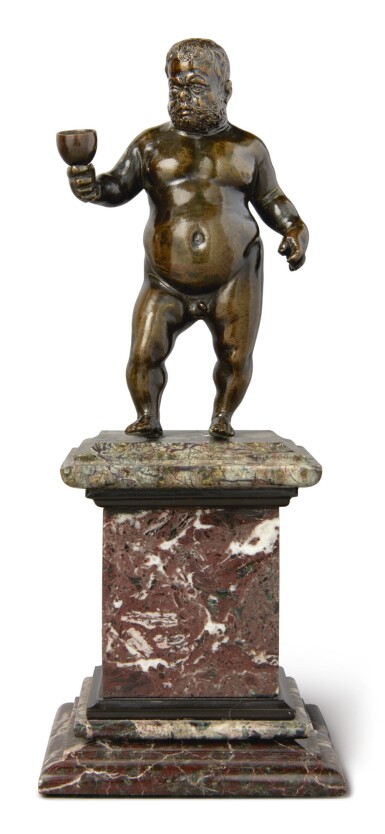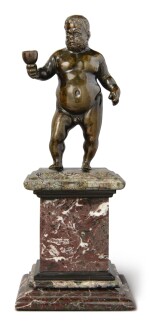Master Sculpture and Works of Art Part II
Master Sculpture and Works of Art Part II

Property from a Distinguished Private Collection, Washington, D.C.
Workshop of Antonio Susini (Florence 1558 - 1624 Florence) After a model by Giambologna (Douai 1527-1608 Florence) Italian, Florence, first half 17th century
Morgante
Lot Closed
January 30, 07:29 PM GMT
Estimate
30,000 - 50,000 USD
Lot Details
Description
Workshop of Antonio Susini (Florence 1558 - 1624 Florence)
After a model by Giambologna (Douai 1527-1608 Florence)
Italian, Florence, first half 17th century
Morgante
Bronze
height 5in.; 12.7cm., upon a variegated marble socle
M. Leithe-Jasper and P. Wengraf, European Bronzes from the Quentin Collection, exhibition catalogue, The Frick Collection, New York, 2004, no. 14, p. 162
Morgante (c. 1535-after 1594) was the celebrated court dwarf of Cosimo I de' Medici, Grand Duke of Tuscany and he was portrayed numerous times by the most important artists in the Medici court including Bronzino in his double sided portrait in the Uffizi; Valerio Cioli in a large-scale sculpture of Morgante astride a turtle in the Boboli gardens (dating to the 1560's); and by Giambologna in small scale bronze statuettes, including the present model and a Morgante on a dragon in the Bargello (cast in 1582).
Anthony Radcliffe suggested that the present model was created by Giambologna in the 1580's and the extant casts can be divided into two variants: the first (Type A) with cornetto and walking stick and the second (Type B) where Morgante appears as Bacchus holding a wine cup, as seen in the present model. Leithe-Jasper and Wengraf (cf. pp. 162-165) expanded upon Radcliffe's categorization of the two variants, noting that Type B may be a slightly later version of the subject.
The present cast is finely chased with beautiful details including the modeling in the hair and beard and retains some of its orange-gold translucent lacquer typical of bronzes from Florence, in this period and particularly those from the Giambologna and Susini workshops.
RELATED LITERATURE
C. Avery and A. Radcliffe, Giambologna 1529-1608: Sculptor to the Medici, exhibition catalogue, London, Vienna and Edinburgh, 1978, nos. 50-5, pp. 101-105;
B. Paolozzi Strozzi and D. Zikos, Giambologna gli dei, gli eroi, exhibition catalogue, Museo Nazionale del Bargello, Florence, 2006, p. 352, no. 5
